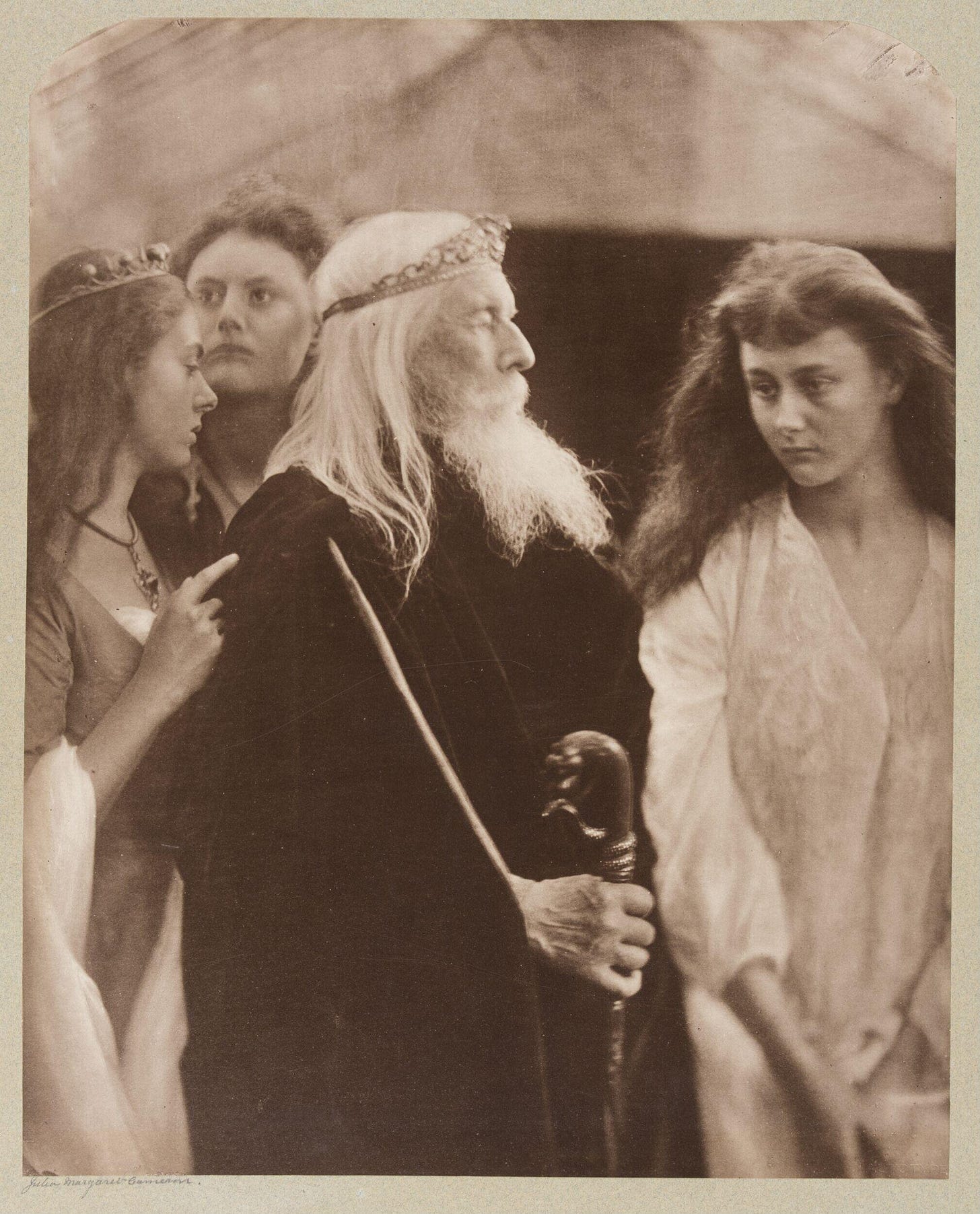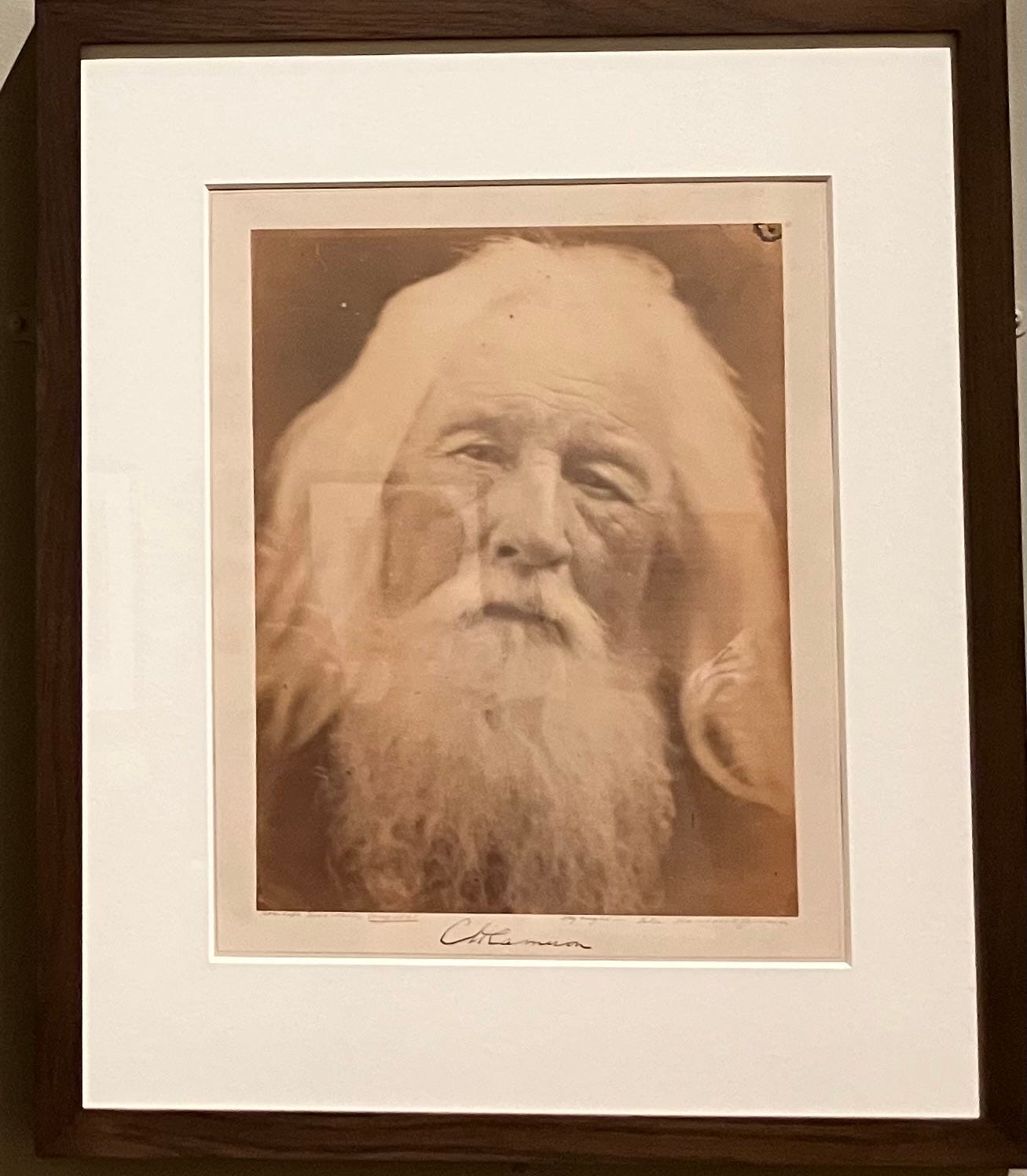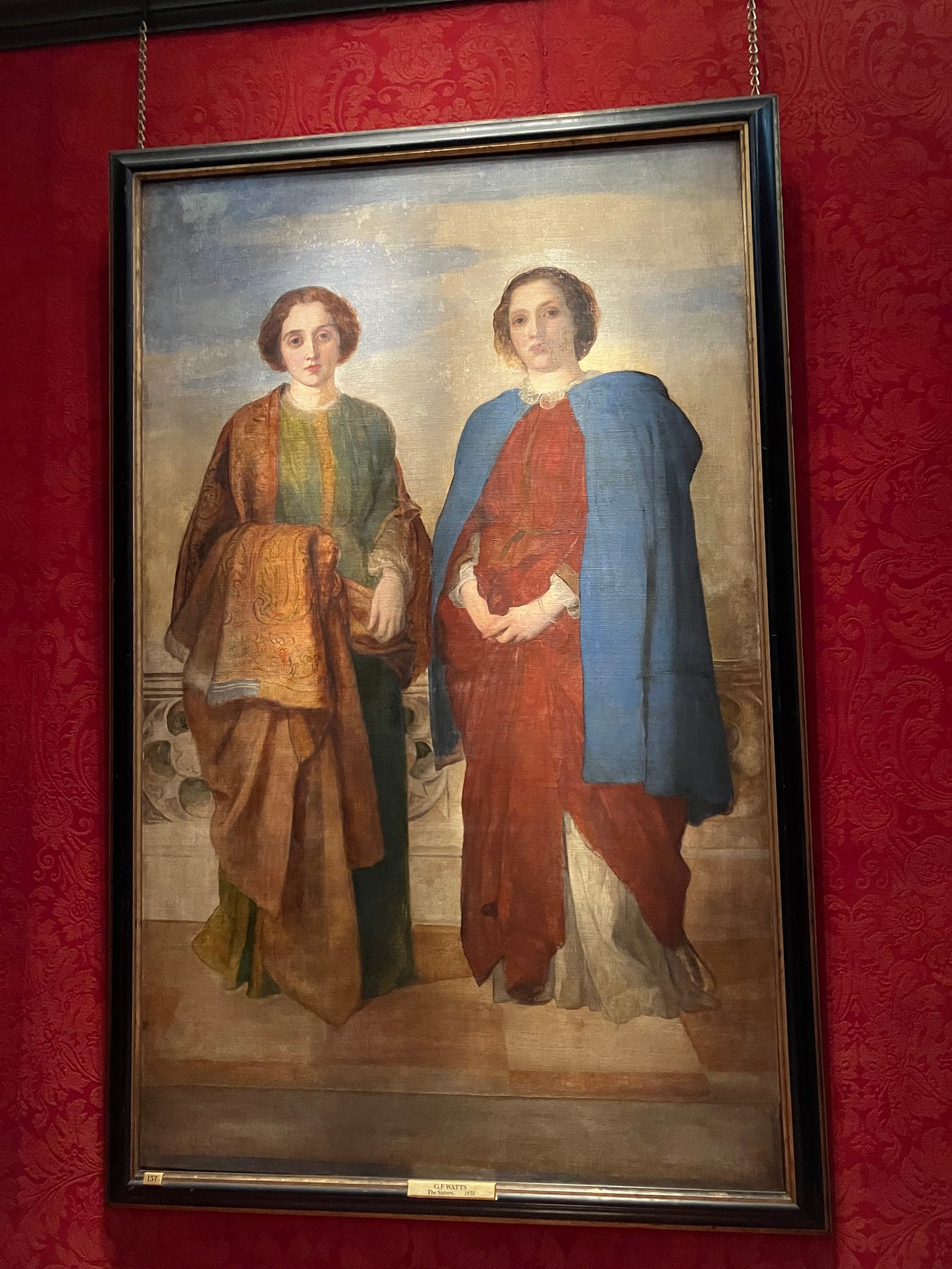Julia and Me
Art, travel, research

I’m behind— on reading the newsletters I subscribe to (I rarely get to anything from Notes) and writing about the art I’ve seen over the past month. This post will be a bit of a ramble. Stick with me.
Last week I saw “Arresting Beauty,” an exhibit of Julia Margaret Cameron photographs at the Morgan Library. I’ve been calling it a “greatest hits” exhibit because it makes a selection of some of Cameron’s best known works from the Victoria and Albert Museum’s collection. The V&A is closely associated with Cameron’s Victorian photography because Cameron began her career as the museum began its own. The South Kensington Museum, as it was known then, was the first museum to acquire her work and its first director, Henry Cole, lent her studio space to use there. The exhibit has made several stops around the world but this is the first time I’ve seen it. I was nervous.
Why? Because I wrote a biography of Cameron twenty years ago and Cameron events revive my imposter syndrome. I spent almost ten years on that book, and it was well received, but I was a literary scholar barging into the art world and I still worry about getting caught out. I was introduced to an art historian just last year who said, “Oh, I remember your book. I sent you a list of corrections, didn’t I?” Recently, in looking for a resource for another Cameron scholar, I found his letter in my notes. He had indeed sent me a correction to make for a future edition. I had gotten the age of one of Cameron’s models wrong.1
And I remembered what I love about Cameron’s work!
So going to the Morgan for this show felt like taking a test that I hadn’t studied for in decades. I chose my companions carefully— my sister and my mother. We had a three-tiered afternoon tea in the museum cafe and spent the last hour before closing circling the sepia-toned gallery. And I remembered what I love about Cameron’s work! Such as the intimacy of her close up portrait of her husband, shown below.2 The other portraits of men could have been taken by other photographers, maybe— though Cameron was known for her velvety black backgrounds, for faces emerging in high relief. But this portrait of Charles! No one else was doing anything like this back then. Just look at the presence and pathos of that face, her husband’s. This photograph is a relationship. Here is a Victorian, meeting your eyes.
Cameron is best known now for her portraits of women, often members of her household or personal circle, and often posing as female characters from the Bible and literature. She played with photography’s ability to transform, while remaining anchored in the real. Her models placed one foot in the allegorical realm and kept one foot on the ground. For example, the sitters for The Sisters (1871), above, were actually sisters. They embody themselves and also the idea of sisterhood, standing together and apart, both alike and different. These specific sisters were two of the Liddells; the most famous of them, the original Alice from Lewis Carroll’s Alice’s Adventures in Wonderland, is missing here, but Cameron photographed her several times— and photographed all three Liddell sisters as Lear’s daughters with her husband as King Lear. The composition cleverly distinguishes between the three, placing one in front and two behind him.

Cameron was herself one of the seven Pattle sisters, born in India, who repatriated to England to become central to mid-Victorian arts and culture. In London last month I visited the house and gallery of her friend and mentor, G.F. Watts, who painted a double portrait of her younger sisters, also called The Sisters and similarly posed. It seems possible that Cameron’s later photograph meant to evoke Watts’ portrait, just as groups of sisters (2, 3, 7!) all relate to each other, symbolically.
Working on Cameron’s biography was like pulling threads from one of the densely woven shawls the women are invariably swathed in. (Watts married first actress Ellen Terry, who posed as Sadness for Cameron, then artist Mary Fraser Tytler, who posed with her four sisters for Cameron’s The Rosebud Garden of Girls and whose sister married another Liddell….)
I spent the rest of my research time in London toggling between the present and the past. I visited Victorian cemeteries like Tower Hamlets and a reconstructed nineteenth-century street in the London Museum Docklands. The Dennis Severs house, built in the eighteenth century and restored in the 1980s for a fictional family of Huguenot silk weavers, combined both simulation and preservation. I called this newsletter (and my biography) “From Life” because that’s the phrase Cameron scrawled on the bottom of her prints— her photographs were tied to life but not life itself; they were also her own creations. It’s a balance that’s also key to biography, which trades in both fact and the interpretation, evidence and speculation.
As I close, I want to express my excitement and gratitude at being named a FINALIST for
’s Aurora Polaris award for creative nonfiction. Daddy-O, the essay collection I submitted, was often floated here first and I am grateful as well to you all for supporting this project. Please like, share, and comment below and I’ll respond!Have you seen any art exhibits you’d like to share with us? The Cameron show is on all summer so go if you can! Other NYC shows I hope to see soon include:
Sargent in Paris at the Metropolitan Museum of Art til August 3. I read Jean Strouse’s account of Sargent’s collaboration with the Wertheimer family but I’m up for more.
Jesse Krimes photographs, also at the Metropolitan Museum of Art, until July 13.
Lorna Simpson retrospective, also at the Metropolitan Museum of Art, until November 2.
Ben Shahn at the Jewish Museum til October 12.
the re-opened Frick Collection
See how defensive I am? I’ll have to check if I ever made that correction.
My photographs of these photographs are terrible, I know. I’m not a photographer and I didn’t notice until I inserted these that they all reflect the images on the opposite wall. Now I’m finding the superimpositions sort of interesting— especially for a show and artist that exposes mistakes.




Congrats for being a finalist with your essay collection! I much enjoyed this post and did not know about the Cameron exhibit up now. Also nice to read about your reflections on being a biographer.
Congratulations Victoria! I am horribly behind in my reading, too, (months - it's such a challenge to keep up), but I've missed reading your posts and I've just ordered a copy of your Julia Margaret Cameron biography. I can't wait to read it - I love her photographs so much!